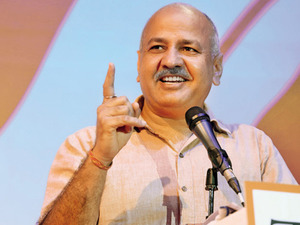Over the past decade, air pollution has emerged as a significant issue, risking the health and well-being of residents in cities across India. Several scientific studies have shown that high exposure to air pollutants can cause severe health damage and lead to increased mortality. The AAP government in Delhi is determined to fight pollution through both short and long-term measures.
In the first year of forming its government in Delhi, against all conventional wisdom, we implemented the odd-even policy to control vehicular pollution – a first for any city in India. Several studies conducted by researchers from Harvard University, University of Chicago and Centre for Science and Environment have shown that the odd-even policy reduced peak levels of pollution substantially. Last winter, we also implemented several measures under the Graded Response Action Plan (GRAP) which is now mandatory for all states in NCR. However, all these are at best emergency measures that do not address the sources of emissions in the long-term.
The Green Budget, which I presented on Thursday, comprises a 26-point programme spanning four departments – environment and forest, transport, power and public works department – and attempts to bring them together in a concerted effort to address the long-term factors contributing to air pollution in Delhi. It is perhaps the first time that such a budgeting exercise has been attempted anywhere in the country where the impact of each department’s proposals to fight pollution were studied in a scientific manner before making budgetary commitments.
The cumulative impact of these 26 initiatives, as estimated independently by World Resources Institute, will be an annual reduction of: 20,98,426 Metric Tonnes (MT) of carbon dioxide emissions, 503 MT of PM 2.5 emissions, 4,540 MT of NOx emissions, 9,364 MT of SOx emissions and 11,515 MT of volatile organic compounds (VOC) emissions.
The initiatives under the Green Budget are a mix of scaling up of conventional solutions and piloting unconventional but high-impact solutions to combat air pollution. For example, Delhi government has decided to give a big push to electric mobility in the national capital, starting with the induction of 1000 fully electric buses. This will be the highest commitment by any city or state in India, or by any city in the world, outside of China. The Delhi government will also support the induction of over 900 electric feeder vehicles in Delhi Metro, and bring out a comprehensive electric vehicle policy for Delhi in the coming year. At the same time, conventional solutions like providing subsidy for purchase of factory-fitted CNG cars so that they become the preferred choice for private car owners instead of petrol or diesel cars have also found a place in the Green Budget.
Other large commitments made under Delhi’s Green Budget include one to buy 1000 MW of green power in the form of solar or wind-generated electricity, introduction of an energy conservation building code for all large commercial buildings in the city, edge-to-edge paving and landscaping of PWD roads to reduce pollution due to road dust and providing incentives to industrial units using polluting fuels and restaurants using coal tandoors and establishments using diesel generator sets to switch over to clean fuels.
Admittedly, the Green Budget is just the beginning of a long fight against air pollution and yet it signals a break from the past in three significant ways. First, it admits that tackling a complex problem such as air pollution is not the job of any single department but needs focus and commitment of the entire government machinery spanning multiple departments and of stakeholders outside the government too. It was important, therefore, for this multi-department exercise to be anchored in the office of the finance minister and be tied closely to the government’s budgeting process.
Second, it challenges government departments to shed their characteristic risk-averse outlook and think out of the box to identify the most impactful solutions to combat air pollution. If not for the Green Budget, Delhi government may have taken longer to reach the decision to induct 1000 electric buses, or to pilot the innovative agriculture-cum-solar farm scheme which will incentivise installation of solar panels on raised structures at agricultural farms without affecting normal farming activities. Such initiatives demonstrate that when it comes to choosing between risking the health of our children and experimenting with new yet promising technologies to combat pollution, the AAP government in Delhi will always opt for the latter.
Third, it admits that we don’t know enough about various contributing factors of air pollution and resolve to build reliable data systems that can continuously educate us but also help us evaluate the effectiveness of various initiatives being undertaken to combat pollution. In the coming year 2018-19, Delhi will become the first city to carry out a real-time source apportionment study in partnership with the University of Washington and establish a system of near-continuous analysis of factors causing pollution.
Only such systems can help us respond to extreme incidents such as the one in November last year, which will go down in memory not for its spike in pollution levels, but for the ensuing confusion over what caused it. It was only much later that the CPCB confirmed that the pollution peaked due to factors outside Delhi. This incident also makes it clear that the answer to Delhi’s pollution problem does not lie in the schemes of Delhi government alone. It will require all states in NCR to launch a similar concerted effort, and for that the Central Government will have to take the lead.


